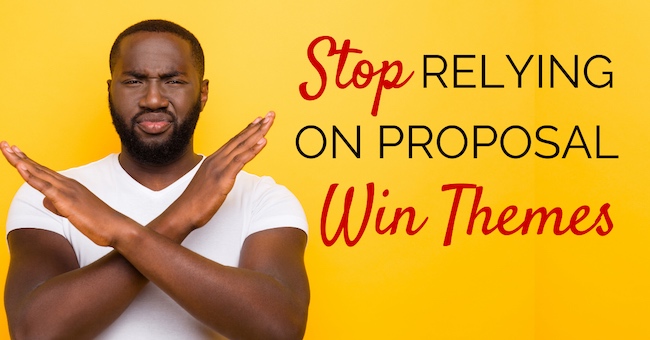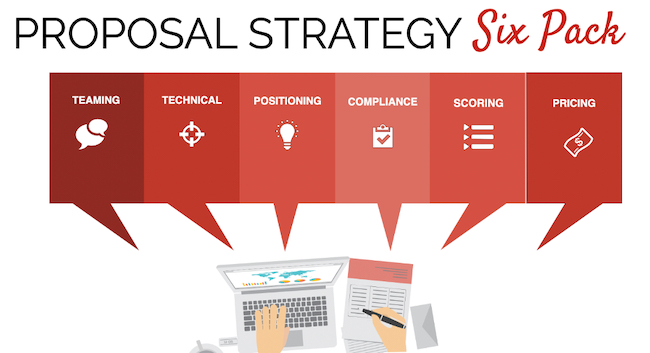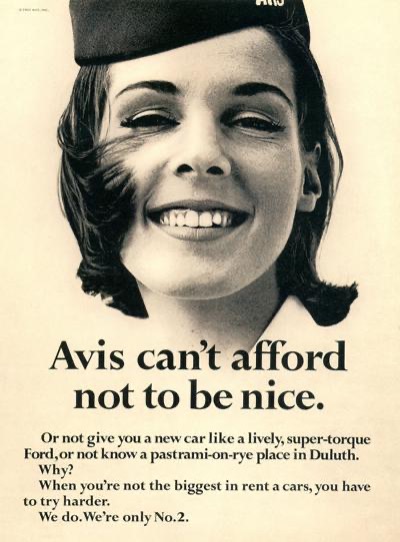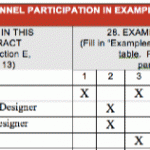
I can just smell the hate mail coming. Yes, today I’m going to try and convince you that relying on proposal win themes is a fool’s game.
For many people, this will be hard to swallow. Others may be staring at the screen wondering, “What is he even talking about?”
But if you stay with me to the end, you might actually end up agreeing with me. Or at the very least, you’ll walk away with a new perspective on proposal win themes and strategy.
So, let’s start at the bottom and work our way up.
What Are Proposal Win Themes?
According to The Shipley Proposal Guide, “win themes (or major themes) apply to the entire proposal. They usually tie a single, unique discriminator to a critical customer need.”
In layman’s terms, win themes are statements you make that illustrate why a client should choose your offering. Generally, win themes consist of three things:
- Features: Aspect of your product or service (like your smartphone’s touch screen)
- Benefits: An advantage to your product or service that meets a customer’s need (like the ability to watch the latest 4K movies on your smartphone while on the toilet at work, so you can be the office movie guru)
- Proof Points: Qualitative or quantitative proof that your statement is true (this smartphone was awarded “best toilet device” by the Motion Picture Association of America)
There is some debate about how many win themes to include in your proposal. Some say 3-4 win themes. Others say put one on every page or every section.
Regardless, many proposal professionals see win themes as how you apply your strategy to a proposal. But let’s look at this in practice.
Proposal Win Theme Example
Let’s build a win theme. We’ll assume we’re a General Contractor proposing on a university project. Maybe one example win theme would read like this:
“Our patented gobbledegook process can cut time off your schedule and reduce ACME University’s library project costs. In fact, we used this process to deliver NextDoor University’s library project ahead of schedule and $3M under budget.”
By every definition, that is a reasonably good Win Theme. It’s got all three elements.
- Feature: Patented gobbledegook process.
- Benefit: Cut time off your schedule and reduce project costs.
- Proof Point: We did it for NextDoor University.
Problem #1: Underestimating Your Clients
There are major flaws associated with relying on win themes in your proposal.
The first seems quite obvious, but is so often ignored.
YOUR CLIENTS AREN’T STUPID!
I say this so much that if there was any statement I would tattoo on my forehead…
…it would be…
…YOUR CLIENTS AREN’T STUPID!
Let me illustrate this with a little story. I was present at an internal retreat for a large university system (multiple universities). I was one of two non-employees there. During that meeting, one project manager made this statement to his colleagues:
“I’ve been in this business for 40 years. Every proposal I’ve ever received swore up and down that they’d deliver the project on-time and on budget. Not one of them has.”
Now, hopefully there was a degree of exaggeration in his statement. But he was trying to make an important point. If you are a general contractor who is proposing on my university project, you may well have delivered NextDoor University’s project under schedule and under budget.
But I am not stupid.
I know you’ve done many university projects. And I know that not all of them, despite using your process, have been delivered on time and on budget. And if you have delivered a project ahead of schedule and under budget, I know that it was the exception to the rule.
Why? Because this is not my first rodeo.
In addition, clients talk to other clients about their vendors. I might even know all about NextDoor University’s project. And I probably got NextDoor’s take on why the project was ahead of schedule and under budget. And that take may or may not align with yours.
Your clients are not stupid, and they can see your win themes for what they are…you trying to sell them.
Even when they are legitimate and well thought out, your win themes could still fall flat.
For example, a friend once told me they indicated in a win theme that they could potentially save the client $20M. Their team spent months making sure they actually could deliver on this promise. But at the end of the day, the client felt the statement was “too salesy and too far fetched” and selected another firm.
Unfortunately, more often than not, your clients have bought before. And they’ve probably been oversold before. What happens is that clients can get thick skin. They, appropriately, view statements in proposals with a grain of salt…maybe even suspicion at times.
You still have to put your best foot forward. You still have to distinguish yourself from the competition. But do not, under any circumstance, underestimate your audience.
Problem #2: Proposal Strategy Is More
Win Themes are an attempt at positioning your firm and offering. Positioning, from a marketing standpoint, is how you present yourself and your offering to potential clients to persuade them to buy.
Note: I’m not talking about “pre-selling” the client (i.e. talking to the client before the RFP “hits the street”). Some people refer to that as positioning because you are presenting yourself and your offering to potential clients prior to bid. I’m talking about positioning in your proposal.
As you can imagine, the right positioning is a critical piece of your strategy. However, it is just one of six strategic elements needed for your proposal.
Here’s an image of what I refer to as the Proposal Strategy Six Pack.

Further, “win theme” is just a fancy way of saying “differentiators” (sometimes referred to value propositions). These differentiators are just one element needed for positioning, which is just one fraction of a complete strategy six pack.
Relying on win themes is simply not sufficient.
For example, when you’re selling something you can’t just list why someone should buy your product. You’ve also got to knock down all the barriers that might prevent someone from buying your product.
Avis used this concept in a very successful ad campaign.

Heck, they’re one of the few car rental operations left.
You might say, “But Matt, that’s an old ad. It’s not a proposal.” But I’ve used this approach with many proposals, to great success.
You simply can’t ignore your weaknesses (see problem #1). You need to address every barrier that could possibly prevent your client from choosing you.
Win Themes are not enough to even position your firm. And they are far from a complete, viable, strategy.
Problem #3: How People Read Proposals
When there isn’t a pandemic, I travel all around the country putting proposal professionals through an exercise where they roleplay as a client. They review real proposals, work in a committee, and award a contract.
And you’ll be happy to learn that, when put in this situation, these people often point to a few statements or elements in a proposal. But you might be surprised to learn that it’s rarely something highlighted or in a call-out box.
Very often, it’s a statement within a technical approach. Sometimes it’s related to the people they see in the proposal.
In my experience, it’s quite difficult to predict which statements will resonate with any single individual. I can’t point to a particular type or category of statement. Very often, different people within a selection committee will latch onto different statements from the same proposal.
And I’ve seen different committees choose the same proposal, but list different reasons.
Yes, you want to differentiate yourself from the competition. Yes, you want your proposal to put your best foot forward. But do not rest your hopes on a few select statements.
This is one area where the win themes concept falls flat. In everything you write, you should explain the benefit. You should offer proof to your statements. It’s foolish to assign benefits and proof to only a few select statements in your proposal.
Problem #3: Win Themes Are Easier To Miss Than You Think
If you’re submitting a 50-page proposal, you’re “putting many eggs” in a statement (or statements) that will appear on two or three pages of your proposal.
Frankly, I know how people consume proposals. And I don’t like those odds. People don’t read proposals like a book, they read them like a magazine.
Here’s another story. I was helping a general contractor submit for a very large government contract to renovate office space for Federal law enforcement (and other) agencies. The security procedures needed to get people and materials in and out of these spaces was daunting. We knew that was the number one challenge of renovating these spaces.
And yes, we made statements explaining that we had a system in place to get clearances and navigate the Federal systems to keep projects moving. And we had them in call-out boxes, in the cover letter, and in the section on security.
But over several pages, we illustrated the detailed procedures we already had in place and use to navigate the security challenge. Even if you were flipping through the proposal, barely paying attention, it was impossible to miss.
Win Themes can be easy to miss. They are even easier to dismiss, particularly when they are not successfully supported with details within your proposal.
Yes, you need to “tell” your clients. But you also need to show.
Win Themes Vs. Proposal Themes
There is a type of proposal theme that I do endorse. But it is very rarely used. This is a single theme that the entire proposal is built around.
This is best explained in chapter four of Laura Ricci’s book, “The Magic Of Winning Proposals.” In this book, she explains the power of her approach to themes.
“One of my favorite proposals had a Calvin and Hobbes cartoon on the cover. Calvin, the young boy, is first seen cramming for a big test. Next, he’s seen sweating it out in the classroom. In the final scene, he explains to his stuffed tiger, Hobbes, ‘You can’t learn this stuff overnight.’
This cartoon was on the cover of a proposal to provide professional services to the Department of Energy at a nuclear facility. This cover may seem strange, but the magic is there because those who came up with it understood the issues and brainstorming led to this theme. There were two major issues that the theme succinctly reflected:
- The buyer who would be the lead decision-maker was frustrated in the past by consultants who arrived at his site inexperienced and untrained. He often complained to the Project Manager that, “You just can’t learn this stuff overnight.
- The Project Manager found out that the client liked Calvin and Hobbes and missed seeing this comic strip when he transferred to the DOE site, because the newspaper in the area did not include it on its comic pages. So each week, the Project Manager clipped out the comic strip and faxed it to the client.
That kind of information forms the basis of the knowledge that makes the magic of a good Theme.”
That’s a great example of using a proposal theme. It’s a conceptual theme. It doesn’t follow the “win theme” format. And while I understand that you won’t always have this level of inside knowledge before you see an RFP, I do see this as a superior approach to proposal themes.
I can assure you that Laura’s proposal had many other differentiators. In fact, I can promise you that proposal had a benefit statement for every single section and subsection in the proposal.
The Bottom Line On Proposal Win Themes
Like I mentioned above, I’m not against the idea of differentiators in your proposal. In fact, they are essential.
What I’m concerned about is the concept of “win themes.” More importantly, I strongly disagree with people pushing “win themes” as a strategy.
The Association Of Proposal Management Professionals (APMP) has a guide for people looking to get certified in proposal management. That document defines win themes like this:
“The components of a proposing organization’s win strategy.”
NO. That’s not true!
Win themes are just differentiators. They do not represent a complete strategy.
When you are racking your brain trying to come up with winning theme ideas or quality theme statements, you really should be creating a complete strategy. Yes, that includes positioning (which includes differentiators). But a complete proposal strategy includes so much more.
Proposal professionals need to be able to craft complete strategies. Yes, they need to be able to identify and communicate differentiators. But they need to be competent in every aspect of positioning.
And they need to see positioning for what it is, one piece of the proposal strategy puzzle.
What Are Your Thoughts?
Now it’s your turn. Do you agree? Do you disagree? Share your thoughts by posting a comment.





Some how this just hit home. I could never understand why I need to spend creative energy to get 5 themes right which are meant to explain the why! I would rather get to the point – our proposal response is aims to address all your challenges outlined in the RFP and do just that!
I agree – too many proposal managers/authors get hung up on win themes and making sure they are carried throughout the proposal – but they don’t develop an overall proposal strategy. Your “magazine” analogy is spot on.
Interesting point of view. However, it reads like you are promoting a holistic approach compared to a specific element of an overall Proposal Management approach. And since the APMP approach is also an holistic approach, I am struggling to see if you have a distinct other point of view to win theme than APMP.